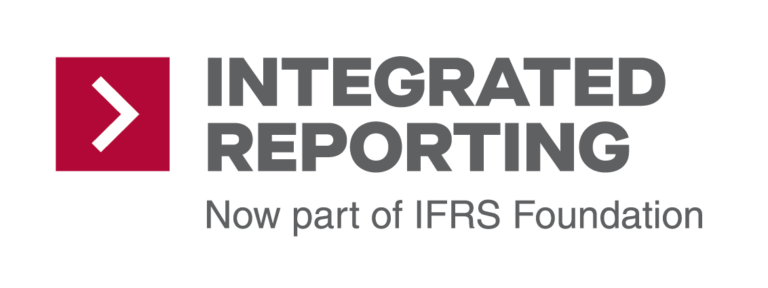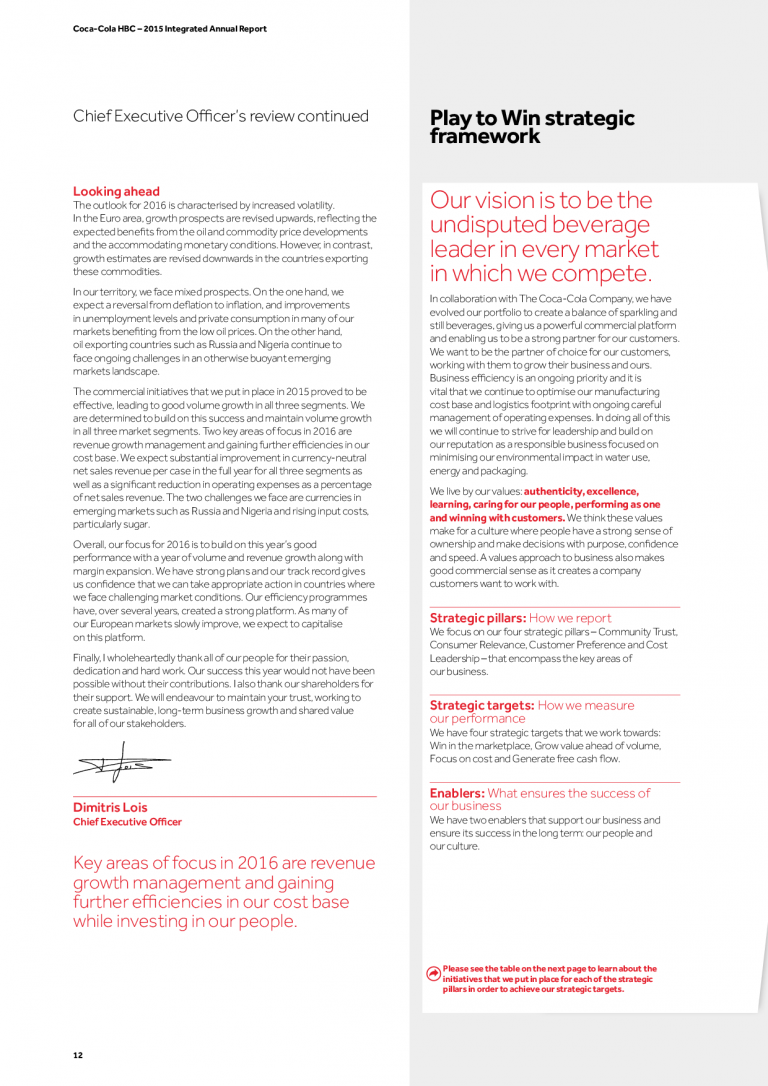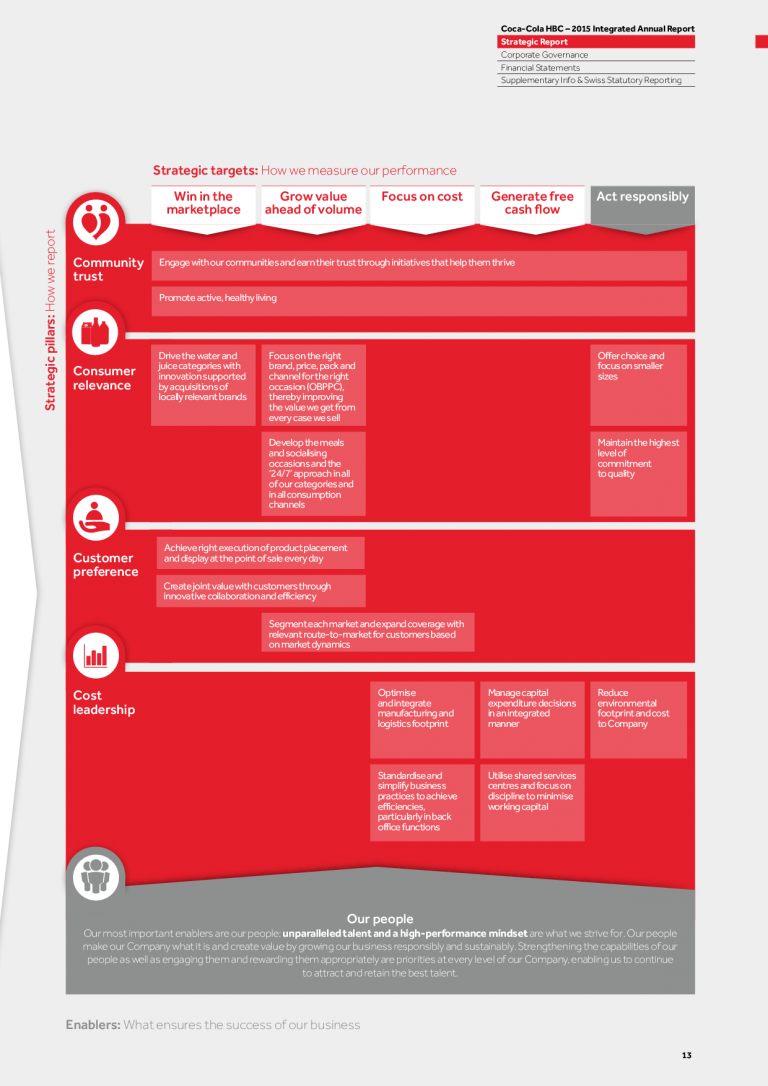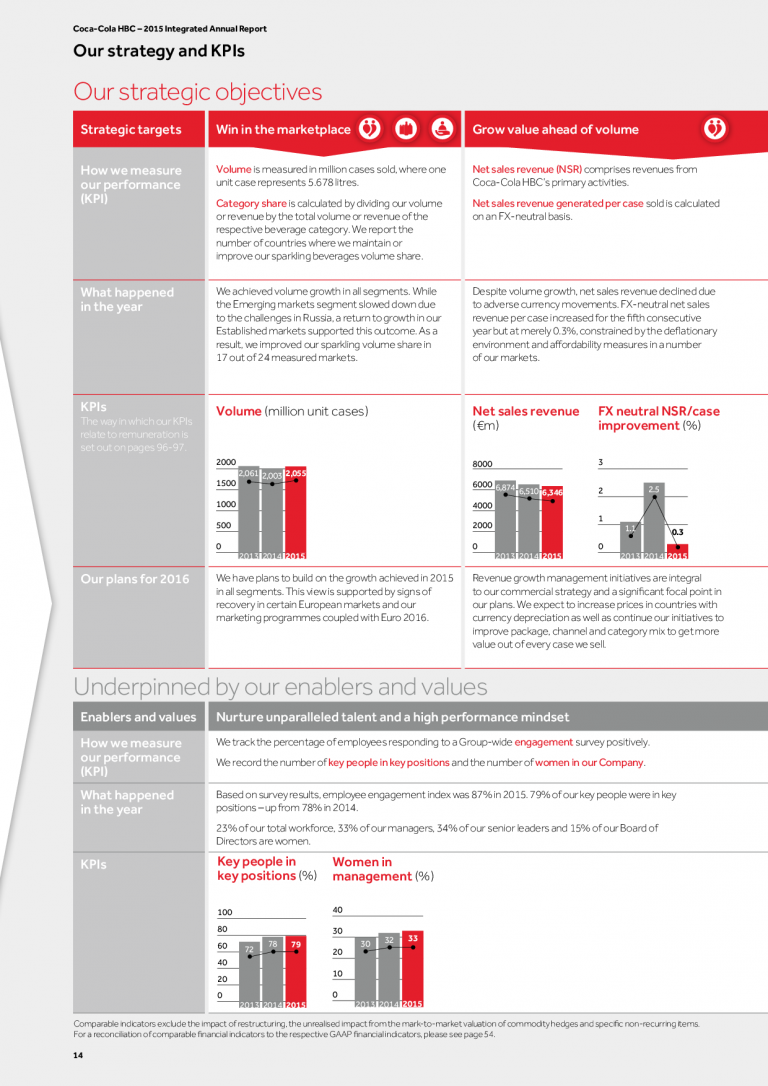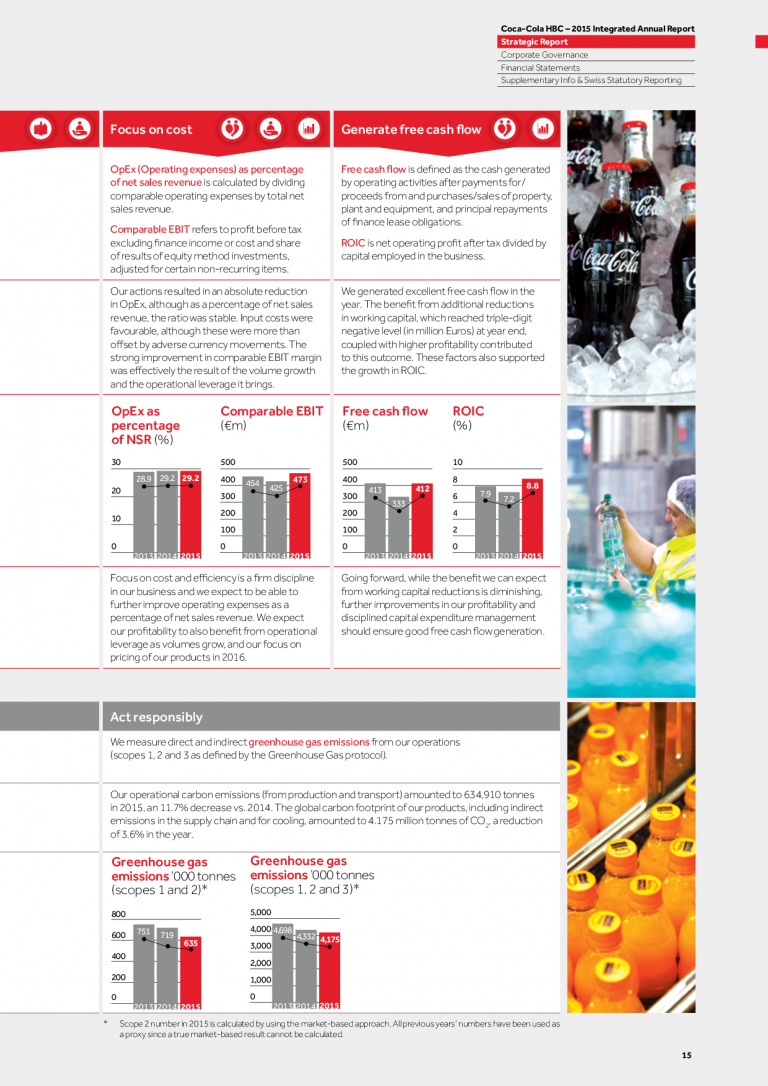· Strategy and resource allocation
- Value creation
- Connectivity of information
- Strategic focus and future orientation
Key observations:
In order to “provide insight into the organization’s strategy, and how it relates to the organization’s ability to create value in the short, medium and long term” (International <IR> Framework, para. 3.3) the section “Play to win strategic framework” briefly explains the four strategic pillars on which the organization’s reporting process is based, the four strategic targets against which its performance is measured and the two enablers that allow it to be successful in the business (p. 12). A table further explains the actions undertaken in relation to each of these strategic aspects and how these are interrelated in order to sustain value creation over time (p. 13).
In addition, a table in the following section “Our strategy and KPIs” (pp. 14-15) outlines the degree of achievement of the strategic objectives by indicating 1) which KPIs are used and how they are calculated, 2) the main events that have affected the ability of the organization to continue to create value, 3) the comparability of current results with previous years, and 4) the future plans based on the performance obtained. The enablers and the values that underpin these outcomes are also presented. This overall description “provides useful information to assess the plausibility of what has been reported concerning the present-to-future period […] and is “useful in analyzing current capabilities and the quality of management” (International <IR> Framework, para. 3.8). Indeed, in relation to the latter, a note in the box on KPIs makes reference to the pages that describe the way in which they relate to remuneration. This clearly demonstrates “how remuneration and incentives are linked to value creation in the short, medium and long term” (International <IR> Framework, para. 4.9).
